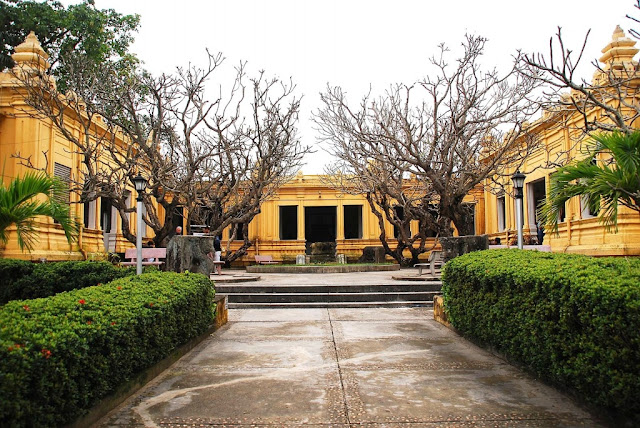The Cham Museum is the main attraction of vietnam danang and is worth the trip, even if you're coming all the way from Hoi An for it alone.
This old sandstone building houses the world's largest collection of Cham art and sculpture, and was established in 1919 by the Ecole Francais d'Extreme-Orient (EFEO). Da Nang was chosen as the location due to its proximity to the former kingdom of Champa, My Son and Tra Kieu. The museum follows Cham architectural themes, and was enlarged in 1936 as its collection increased. More than 400 original pieces of sculpture and text documents spanning the fifth to the 15th centuries are on show. Each of the museum's ten rooms bears the name of the district in which the relics were found.
For us the most impressive exhibit is a huge stone Buddhist pedestal (the one with the missing head) sitting with his hands on his knees with his feet flat on the ground. It depicts the Champa king of Indrapura who was the only Buddhist Champa king; this is an unusual image of a Buddha sitting in a chair. Look closely and you'll see that every available surface is intricately carved, with images related to the Buddha's life -- a huge artistic diary.
When we last visited in 2014, the buildings were being restored and a big chunk of the exhibits had gone off to a New York museum, which was slightly disappointing, but very much needed. Entrance to the museum is 40,000 VND, with free guides available for groups of five or more. The best time to visit (especially in the heat of April to September) is early morning as there is no air-conditioning and it can get uncomfortably hot.
Many visitors complain about a lack of information, a problem that was recently addressed with large laminated information posters in vietnam travel, French and English, positioned just inside the entrance to each room. They are easy to miss, especially if you are unfortunate enough to rock up at the same time as a tour bus, so keep an eye out for them.
If you plan a side trip to My Son, ask your guide to stop in at the Bang An Tower on the way through, a far better preserved example of Cham architecture.

EmoticonEmoticon